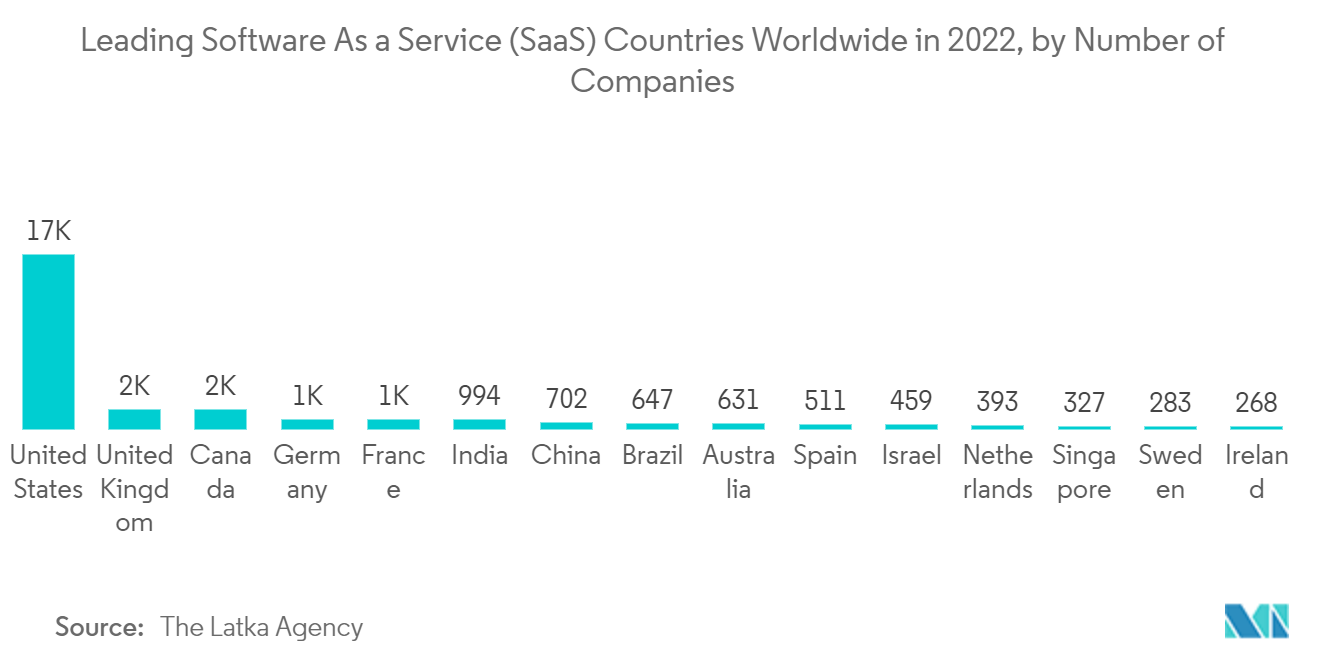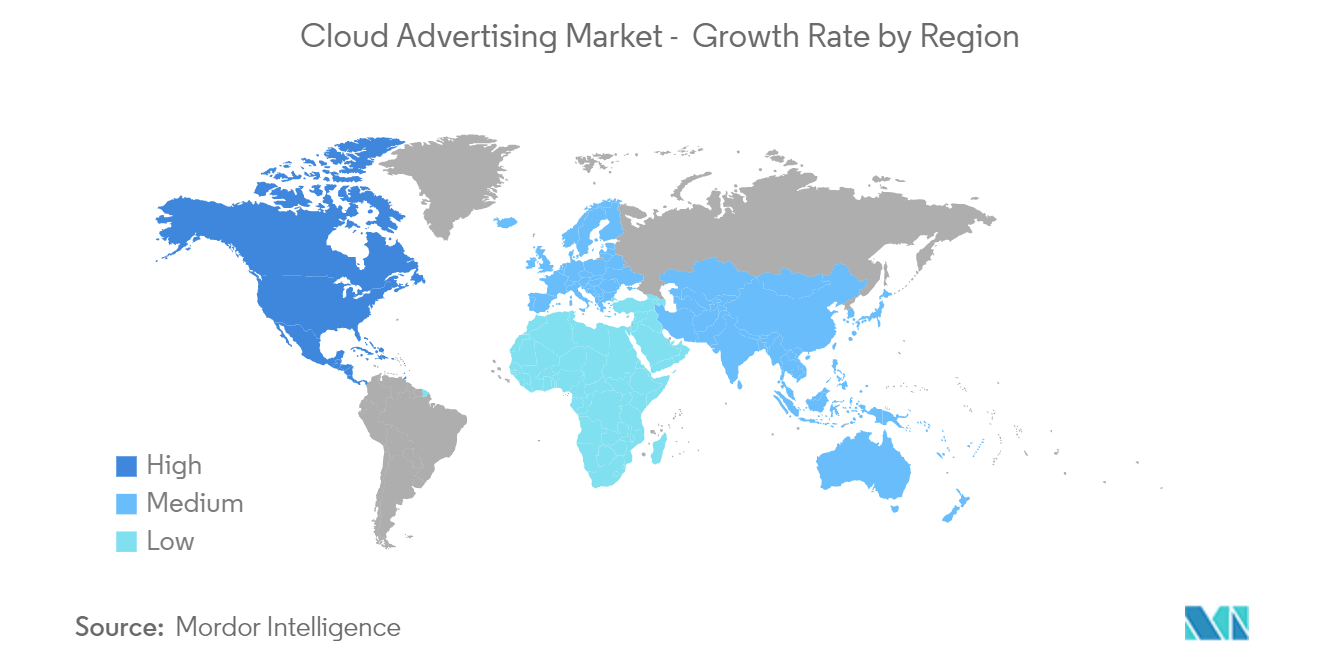Market Trends of Cloud Advertising Industry
This section covers the major market trends shaping the Cloud Advertising Market according to our research experts:
Software-as-a -Service (SaaS) segment is Expected to Occupy Significant Share
- SaaS is an emerging new technology that allows businesses to access and store data online. Among the key attributes of SaaS technology are flexibility, scalability, reliability, and agility. Software as a service (SaaS) helps businesses with their IT infrastructure costs in specific ways. This is the main factor driving firms to embrace SaaS apps more frequently.
- Software-as-a-Service (SaaS) refers to an alternative way of accessing software, instead of traditional access methods (where the service provider delivers software and applications through the internet and the end-users subscribe to the software and access it via the web or vendor APIs). SaaS refers to a subscription-based model in which the software is hosted in the cloud and accessed through the internet.
- The SaaS industry is expanding due to rising demand from organizations for a single solution to resolve business issues. Businesses employ SaaS Platform software, which combines several programs, including supply chain management, e-commerce, business intelligence, and customer relationship management (CRM).
- Businesses are investing increasingly in mobile SaaS, and app-based solutions as smartphones become essential to people's lives, allowing for simple access to information whenever and wherever. People may synchronize, update, and manage documents using smartphones and app-based SaaS. SaaS for mobile devices and app-based services is predicted to become more prevalent.
- SaaS-based applications can be accessed through the internet and require proper integration with on-premise systems or other clouds. The significant benefits of SaaS include no hardware costs, no initial setup costs, a pay-for-what-the-customer use factor, scalable usage, automatic updates, cross-device compatibility, and accessibility from any location. The users neither manage nor control the cloud infrastructure, which includes networks, servers, operating systems, storage, and individual application capabilities.
- The rising popularity of cloud-based services drives the demand for SaaS solutions. Several B2B SaaS suppliers who want to expand their clientele faces challenges like poor lead generation, high customer acquisition expenses, low customer retention rates, and subpar customer lifetime value.
- For instance, in February 2023, The top SaaS purchase platform, Vendr, unveiled Explore, a dynamic catalog of the entire software industry designed to assist businesses in making quicker and more informed purchasing decisions. Explore gives procurement and finance teams a clear glimpse into over 19,000 items powered by the world's most extensive SaaS data set. This enables them to evaluate alternatives and sort and filter depending on essential aspects.
- In the SaaS model, users are not given much control over the data or the application. There are also specific security concerns with straight SaaS applications. SaaS applications and services are often combined with other cloud and on-premises models in hybrid environments. Organizations often need their SaaS applications to couple with multiple different applications and platforms in their data centers and other cloud platforms.

North America to Hold Significant Market Share
- North America is dominating the global cloud advertising market due to the high cloud adoption rate among regional end users. Most of the significant market vendors are also US-based.
- Government agencies are redefining their industries in order to provide better citizen services. In order to hasten the adoption of the cloud, the U.S. government implemented the CloudFirst policy, according to the U.S. Federal Cloud Computing Strategy. This policy encourages the administration of services, innovation, and the implementation of cutting-edge technologies. This also states that the agency's fundamental competencies and mission will take priority over the technology itself.
- Governments are also benefiting from more business flexibility because of cloud usage, despite their back-end silo systems. Early cloud adopters include the U.S. Army, Air Force, Navy, DOJ, USDA, Department of Education, and more. These organizations created the trend and led the way for others to follow.
- Furthermore, the Retail Cloud Market indicates that North America is dominant as a result of the quick adoption of cloud-based solutions in the retail industry in industrialized nations like Canada and the U.S. The increase in mobile and new technology investments is also anticipated to help the regional industry maintain its dominance in the ensuing years.
- The e-commerce sector in the United States is now driven by Amazon, which will accelerate the adoption rate of cloud solutions in the region over the projected period. According to the U.S. Census, e-commerce sales were anticipated at USD 1,034.1 billion in 2022, up 7.7% (0.4%) from 2021. From 2021 to 2022, total retail sales climbed by 8.1% (0.9%). 14.6 percent of all sales in 2022 were made through e-commerce.
- All e-commerce enterprises in the region can benefit significantly from cloud computing. The entire "online transaction" business is changing because of e-commerce. The benefits and use of cloud computing in the eCommerce sector are expanding rapidly. The need for organizations to scale their operations quickly and easily, as well as the requirement for them to be able to store and access data from any location, are fueling this expansion.
- As a result, Companies in the region increasingly use the cloud to store and analyze their data, and the trend seems to continue. Businesses can cut their I.T. expenses further while reaping the benefits of utilizing cloud resources by introducing new technologies like serverless architecture and containers.


